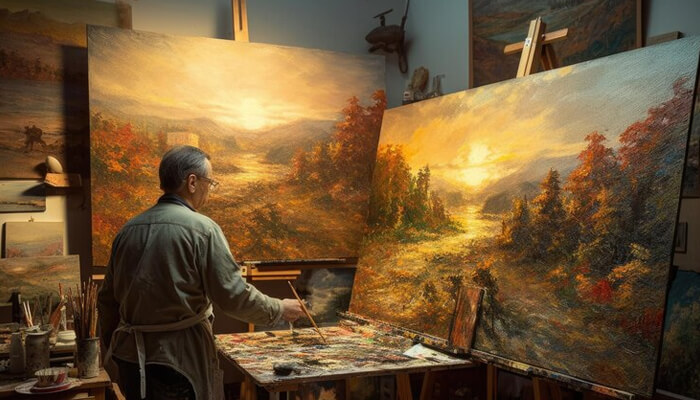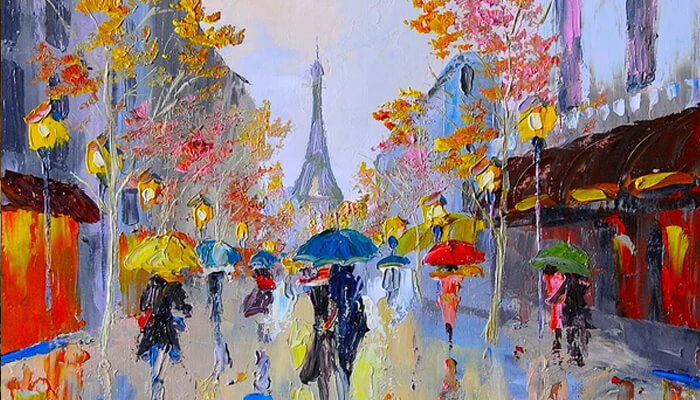Choosing the right paint to express your unique artistic vision is an exciting yet daunting first step for any budding artist. This is especially true since there are many different painting mediums to choose from, each with its own distinct traits and techniques–from watercolors and acrylics to oils and pastels.
If you want to expand your horizons as an artist, you should first know about the fundamentals of the different mediums of painting. In this article, we’ll go through the basics of painting mediums and help you select the right one for your unique style and goals. Keep reading to know more.
Painting with Acrylic
Acrylic painting is a popular medium because artists of all skill levels can use it since it’s easy to work with. Additionally, acrylic painting is quite affordable than oil painting, making it an ideal choice for a beginner like you. With this, you won’t have to worry about experimenting with different painting techniques until you find your style.
Furthermore, acrylic paint is widely used because it dries quickly, can be used for a variety of purposes, and yields strikingly vivid colors. As opposed to slower-drying paints like oil, acrylics allow for the rapid application of several layers and the creation of complex textures. You might find this feature beneficial if you value efficiency and wish to generate several layers in a short amount of time.
This painting medium is also versatile enough to be used for everything from delicate glazes to robust impasto. And since they are water-soluble, you can just dilute it with water to create translucent layers or watercolor-like effects.
Acrylic paints allow you to make large, expressive brushstrokes and play with texture and color, making them a great medium if you’re an abstract painter. If you want to experiment with other textures and methods, you may even combine them with other materials.
Painting with Oil
Oil paints are quite popular because of their versatility and the range of expression they provide. Most artists like it because it enables them to make adjustments even after the paint has dried. If you’re the kind of artist who likes to experiment or change their mind midway through finishing a painting, then this medium might be an excellent choice for you.
Oil painting medium is also well-known for its rich hues and ability to give works a sense of depth and texture. It may make more realistic and intricate things, which gives the work of art a more dynamic feel. In the context of landscape painting, for example, this medium excels because of its ability to convey the subtleties of natural light, shadow, and color.
Painting with Watercolor
Transparency is the characteristic of watercolor that makes it special. With this, you can build layers using watercolor to achieve more dazzling effects on paper. This also allows you to create subtle effects on your art piece. This quality allows you to regulate the paint’s intensity and flow, making it appropriate for wet-on-wet, wet-on-dry, and dry-brushing approaches.
This medium is great for the type of creative person who enjoys moving around as they work. Watercolor paints are practical since they are often available in tiny pans or tubes. They’re not only cheap but also widely available. Plus, watercolor is very easy to use since it needs minimal set-up and clean-up.
You may often find watercolor artworks in book illustrations and other forms of graphic design due to the ethereal quality they impart through their fluid lines and subtle color palettes. If this is what you’re after, then watercolor paints may be the way to go.
Painting with Chalk Pastel
Artists often use chalk pastels because of their pliability and the ease with which they may merge colors and textures. This feature might be interesting to you if you prefer a more physical and direct approach to your craft. Because of their rich pigment content, chalk pastels will allow you to express yourself more fully.
Additionally, it can help you create works that pop as it produces strong and saturated colors. In fact, pastels produce more bright colors because their pigments are more concentrated than those in other mediums like watercolors or acrylics.
If you’re the kind of artist who likes to work quickly and intuitively, then this painting medium would be an excellent choice for you. This is so because you can put it straight to the surface without any mixing or waiting for drying times. You may simply add depth, dimension, and visual interest to your paintings by layering and blending chalk pastels on the surface. It also produces a powdery finish, which is unique among the other mediums.
Furthermore, this painting medium doesn’t use water, making it a convenient option if you like to work in different places. Plus, you won’t have to worry about its longevity as it can last from decades to centuries with proper care and doesn’t fade over time.
Discovering Your Painting Medium as a Beginner
It’s wonderful for newbie painters to find a medium and style that they enjoy using. If you want to broaden your possibilities and explore your skill further, though, you should try your hand at a variety of painting mediums.
And always remember not to pressure yourself. As long as you’re having fun while working toward your goal, there’s no reason to rush the process.




